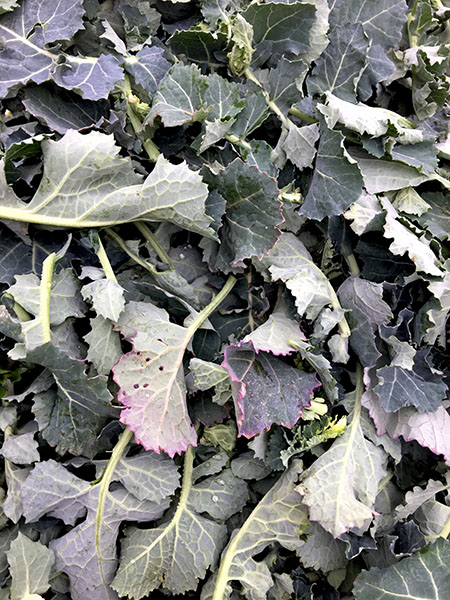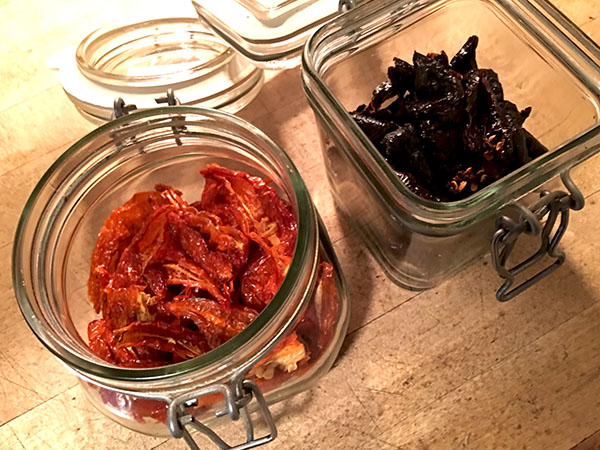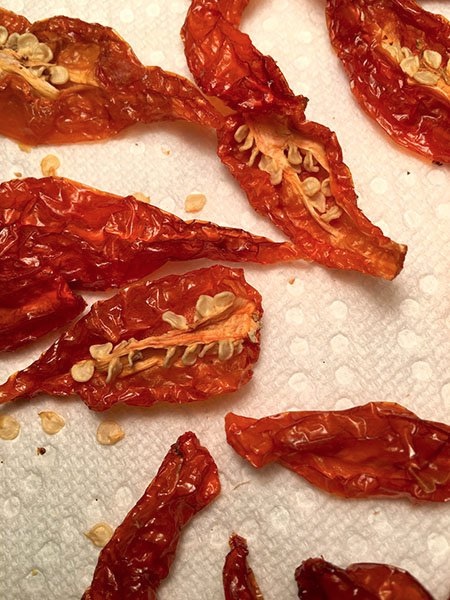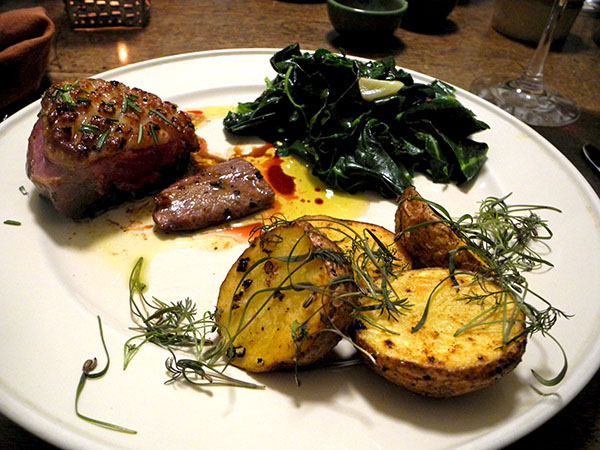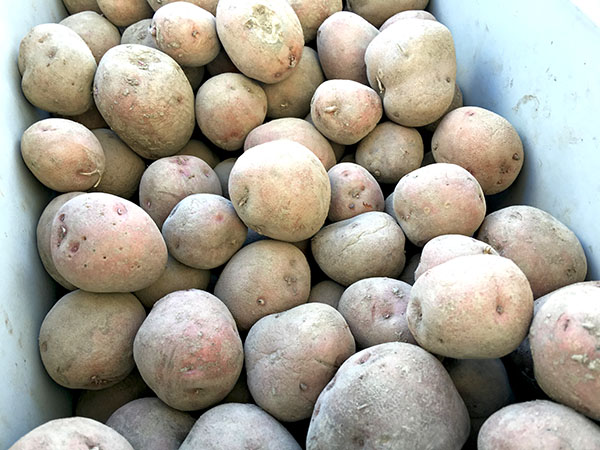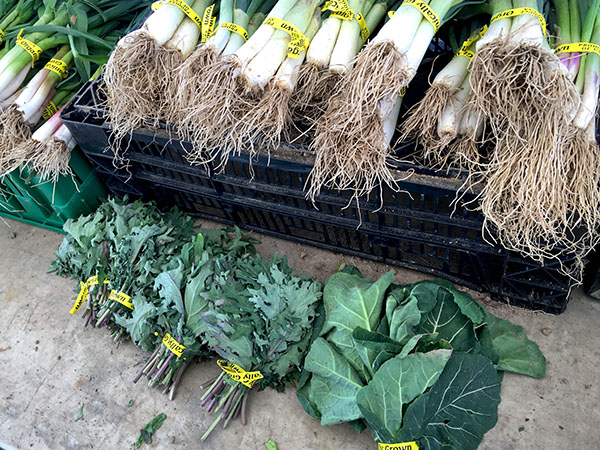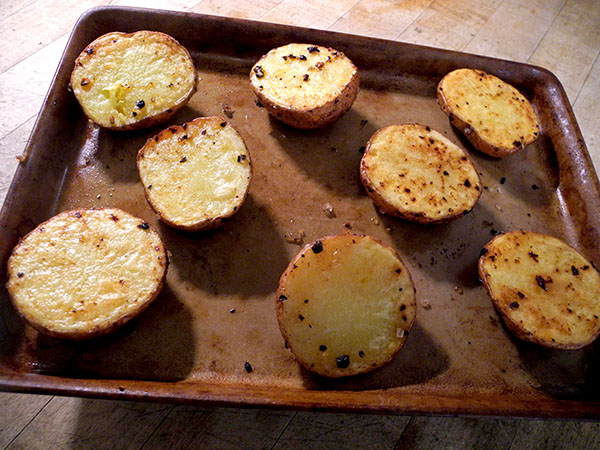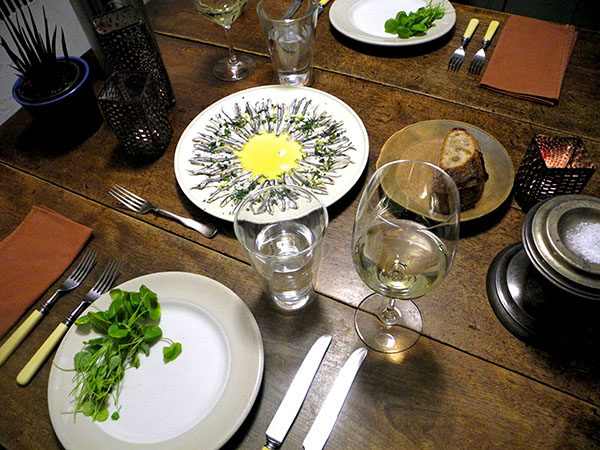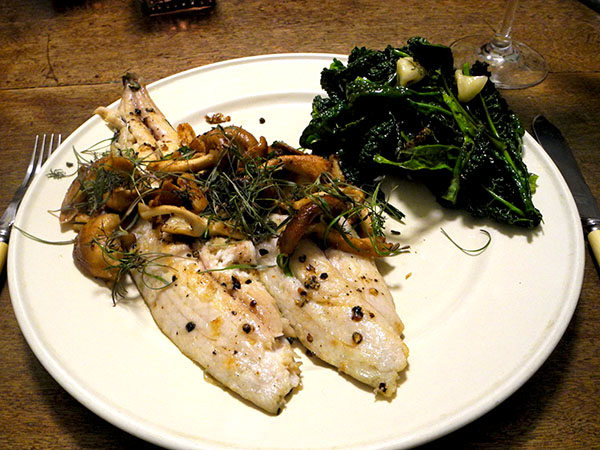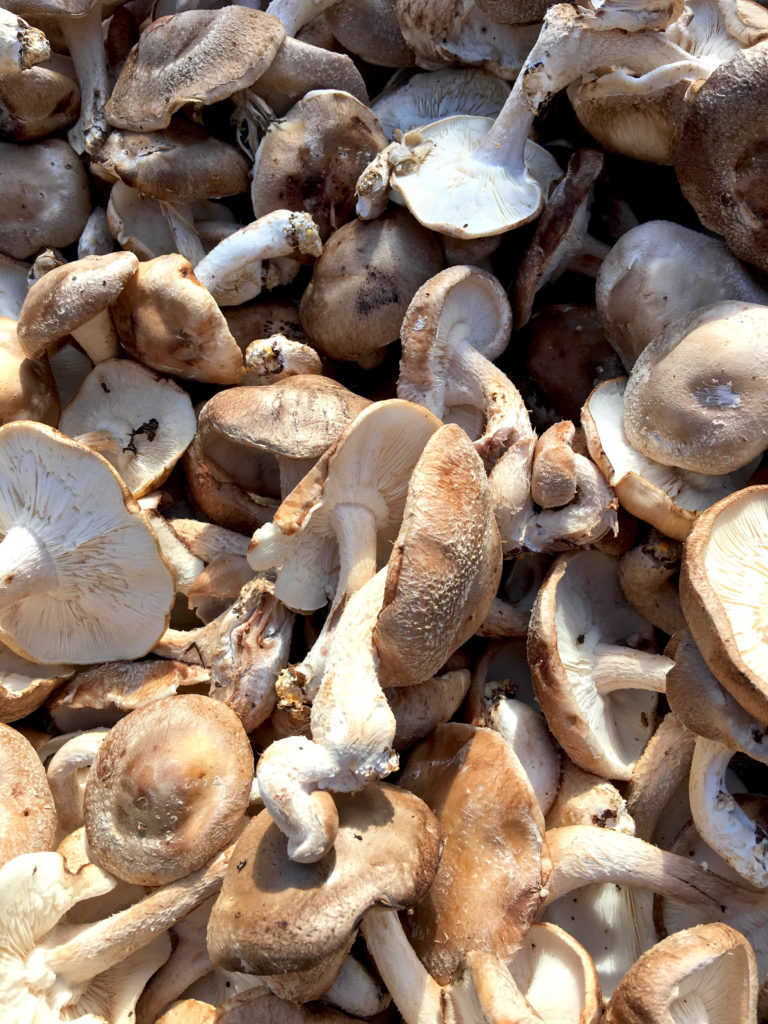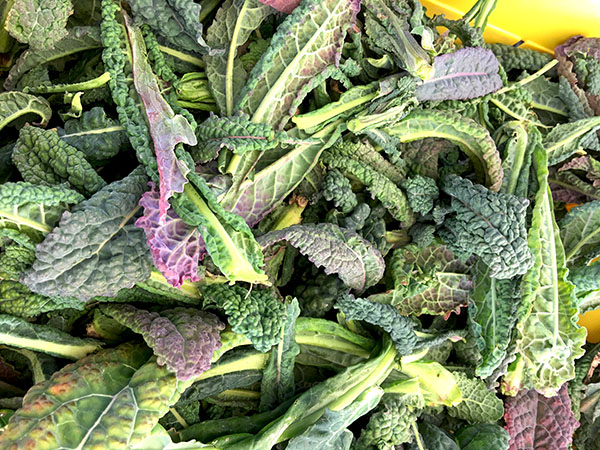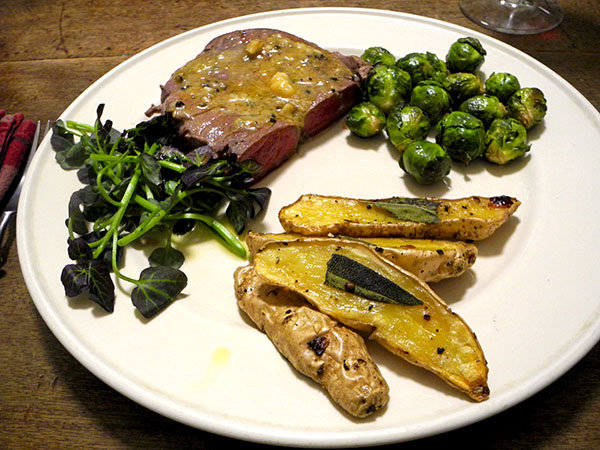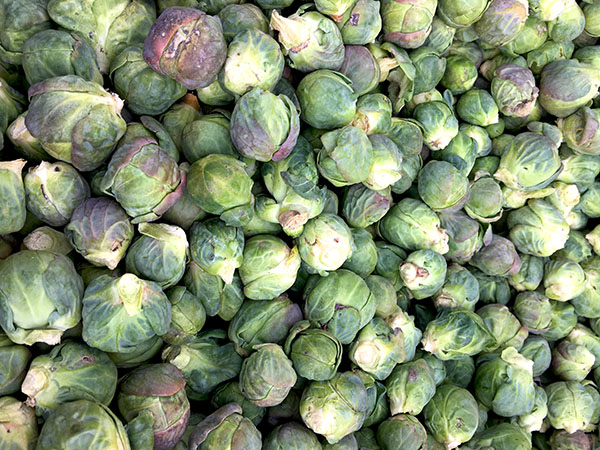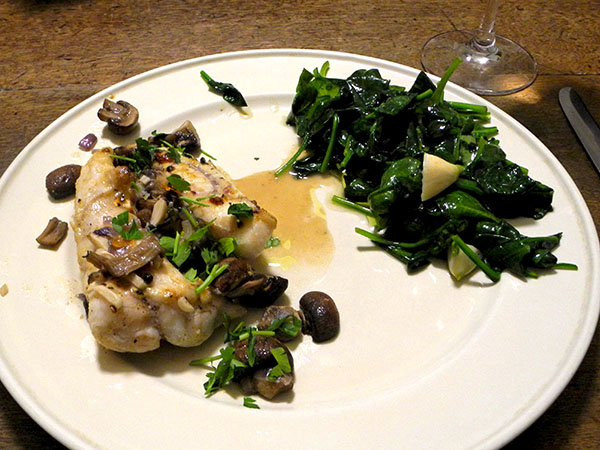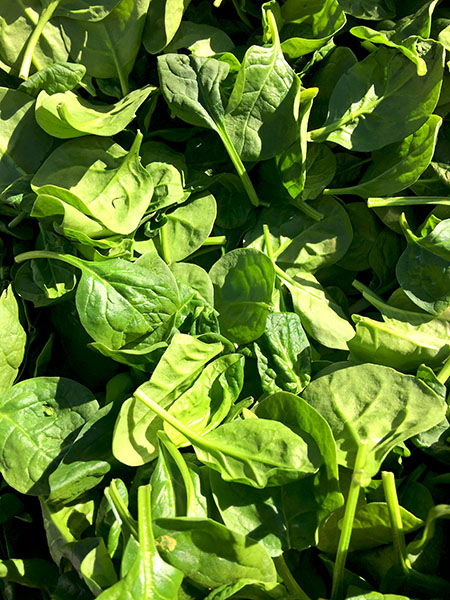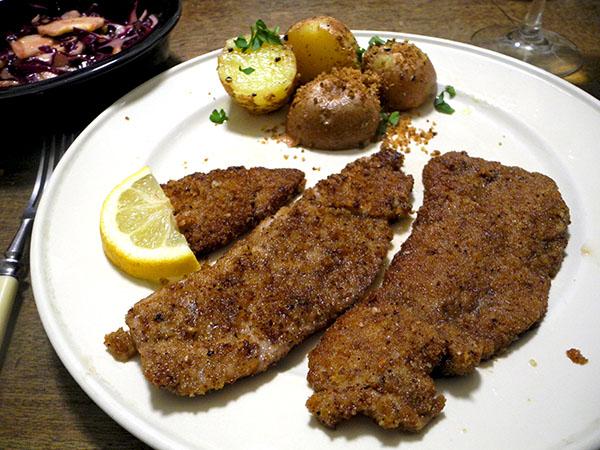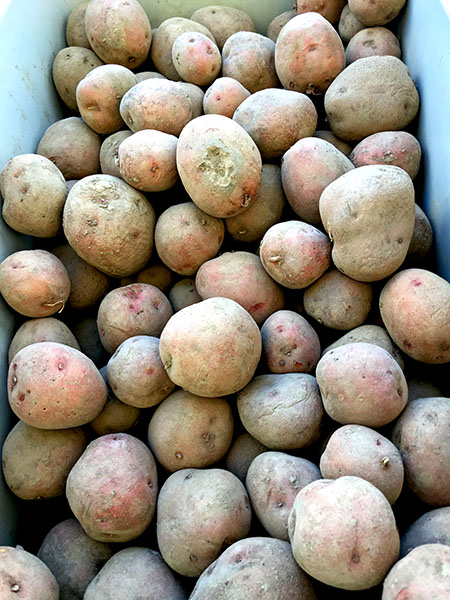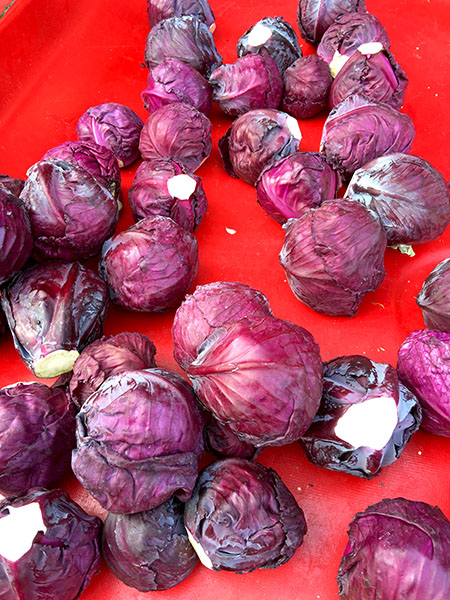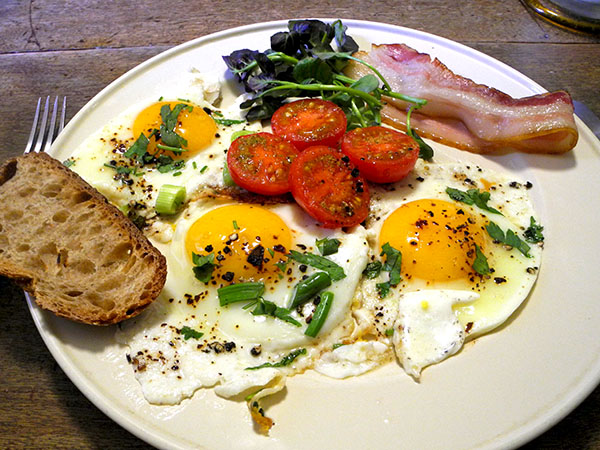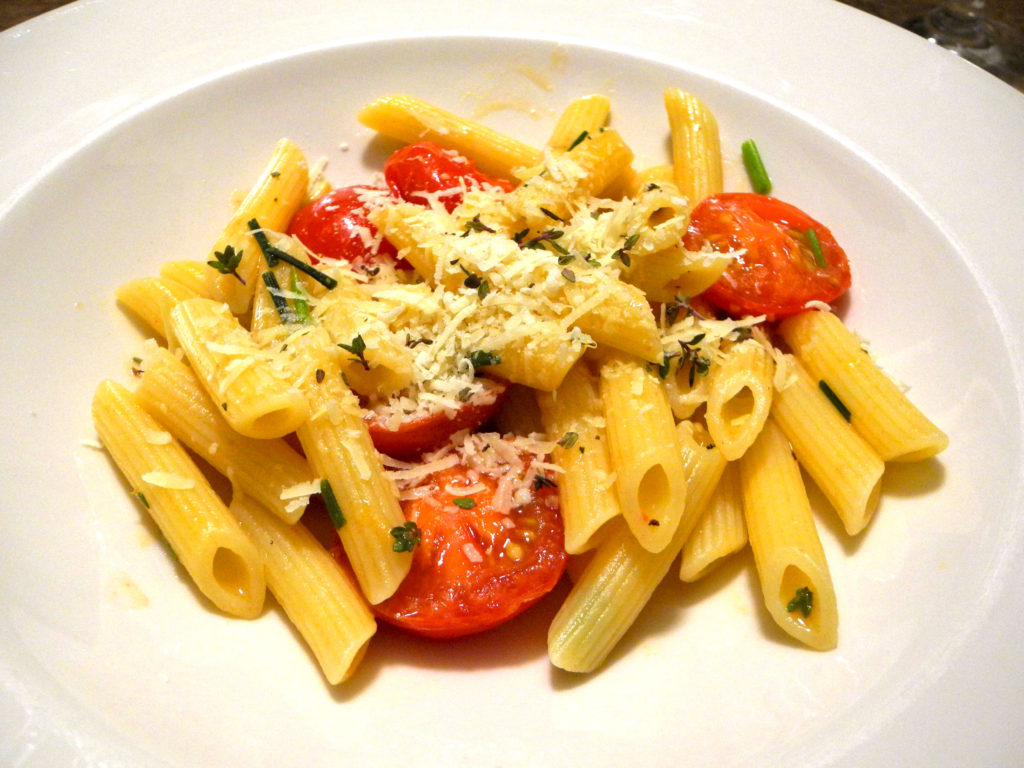 No Habanada was asked to participate in this dish, which is extraordinary.
No Habanada was asked to participate in this dish, which is extraordinary.
Actually, the heatless highbred pepper might have been welcome, since the only unusual ingredient was the mild taste of wild garlic (it’s now spring!).
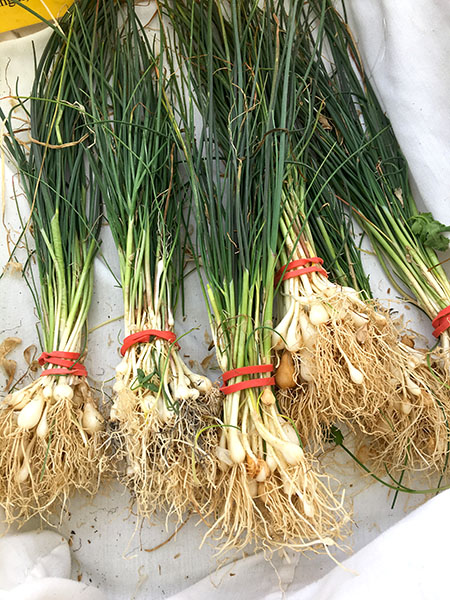
So it was like a night off.
What it did contain was 8 ounces of Afeltra Pasta di Gragnano penne rigate from Eataly, half of a bunch of roughly-chopped wild garlic from Lani’s Farm, chopped red thyme from Phillips Farm, halved Backyard Farms Maine ‘cocktail tomatoes’ from Whole Foods, salt, freshly-ground Tellicherry pepper, olive oil, and grated Parmigiano-Reggiano Vache Rosse from Eataly
There was a first course of La Quercia Speck Americano (an American ‘applewood-smoked prosciuto’), from Whole Foods, and baby arugula from John D Madura Farm, dressed with a good Campania olive oil (Lamparelli O.R.O.) Maldon salt, Tellicherry pepper, served with slices of pain au levain from the Bread Alone stand in the Union Square Greenmarket
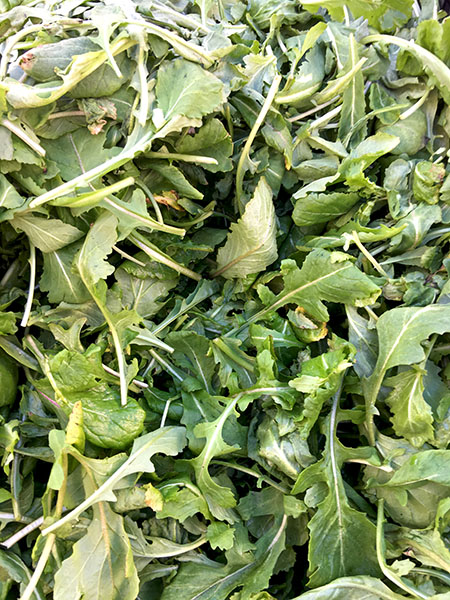
- the wine throughout was a California (Lodi) white, Karen Birmingham Sauvignon Blanc Lodi 2015
- the music throughout was Hanns Eisler’s 1938 ‘Pieces (5) for Orchestra’, and his 1940 ‘Kammersinfonie, Op. 69’, both with Max Pommer
conducting the Leipzig Chamber Music Society

